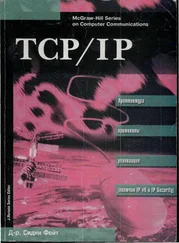I remarked above that a server could publish a public key  and any web browser could then send a message
and any web browser could then send a message  containing a credit card number to it encrypted using
containing a credit card number to it encrypted using  :
:  . This is in essence what the TLS protocol (then known as SSL) was designed to do, at the start of e-commerce. It was developed by Paul Kocher and Taher ElGamal in 1995 to support encryption and authentication in both directions, so that both
. This is in essence what the TLS protocol (then known as SSL) was designed to do, at the start of e-commerce. It was developed by Paul Kocher and Taher ElGamal in 1995 to support encryption and authentication in both directions, so that both httprequests and responses can be protected against both eavesdropping and manipulation. It's the protocol that's activated when you see the padlock on your browser toolbar.
Here is a simplified description of the basic version of the protocol in TLS v1:
1 the client sends the server a client hello message that contains its name , a transaction serial number , and a random nonce ;
2 the server replies with a server hello message that contains its name , a transaction serial number , a random nonce , and a certificate containing its public key . The client now checks the certificate , and if need be checks the key that signed it in another certificate, and so on back to a root certificate issued by a company such as Verisign and stored in the browser;
3 the client sends a key exchange message containing a pre-master-secret key, , encrypted under the server public key . It also sends a finished message with a message authentication code (MAC) computed on all the messages to date. The key for this MAC is the master-secret, . This key is computed by hashing the pre-master-secret key with the nonces sent by the client and server: . From this point onward, all the traffic is encrypted; we'll write this as in the client-server direction and from the server to the client. These keys are generated in turn by hashing the nonces with .
4 The server also sends a finished message with a MAC computed on all the messages to date. It then finally starts sending the data.
Once a client and server have established a pre-master-secret, no more public-key operations are needed as further master secrets can be obtained by hashing it with new nonces.
The full protocol is more complex than this, and has gone through a number of versions. It has supported a number of different ciphersuites, initially so that export versions of software could be limited to 40 bit keys – a condition of export licensing that was imposed for many years by the US government. This led to downgrade attacks where a middleperson could force the use of weak keys. Other ciphersuites support signed Diffie-Hellman key exchanges for transient keys, to provide forward and backward secrecy. TLS also has options for bidirectional authentication so that if the client also has a certificate, this can be checked by the server. In addition, the working keys  and
and  can contain separate subkeys for encryption and authentication, as is needed for legacy modes of operation such as CBC plus CBC MAC.
can contain separate subkeys for encryption and authentication, as is needed for legacy modes of operation such as CBC plus CBC MAC.
As well as being used to encrypt web traffic, TLS has also been available as an authentication option in Windows from Windows 2000 onwards; you can use it instead of Kerberos for authentication on corporate networks. I will describe its use in more detail in the chapter on network attack and defence.
Although early versions of SSL had a number of bugs [1977], SSL 3.0 and later appear to be sound; the version after SSL 3.0 was renamed TLS 1.0. It was formally verified by Larry Paulson in 1998, so we know that the idealised version of the protocol doesn't have any bugs [1504].
However, in the more than twenty years since then, there have been over a dozen serious attacks. Even in 1998, Daniel Bleichenbacher came up with the first of a number of attacks based on measuring the time it takes a server to decrypt, or the error messages it returns in response to carefully-crafted protocol responses [265]. TLS 1.1 appeared in 2006 with protection against exploits of CBC encryption and of padding errors; TLS 1.2 followed two years later, upgrading the hash function to SHA256 and supporting authenticated encryption; and meanwhile there were a number of patches dealing with various attacks that had emerged. Many of these patches were rather inelegant because of the difficulty of changing a widely-used protocol; it's difficult to change both the server and client ends at once, as any client still has to interact with millions of servers, many running outdated software, and most websites want to be able to deal with browsers of all ages and on all sorts of devices. This has been dealt with by the big service firms changing their browsers to reject obsolete ciphersuites, and to add features like strict transport security (STS) whereby a website can instruct browsers to only interact with it using https in future (to prevent downgrade attacks). The browser firms have also mandated a number of other supporting measures, from shorter certificate lifetimes to certificate transparency, which we'll discuss in the chapter on network attack and defence.
The most recent major upgrade to the core protocol, TLS 1.3, was approved by the IETF in January 2019 after two years of discussion. It has dropped backwards compatibility in order to end support for many old ciphers, and made it mandatory to establish end-to-end forward secrecy by means of a Diffie-Hellman key exchange at the start of each session. This has caused controversy with the banking industry, which routinely intercepts encrypted sessions in order to do monitoring for compliance purposes. This will no longer be possible, so banks will have to bear the legal discomfort of using obsolete encryption or the financial cost of redeveloping systems to monitor compliance at endpoints instead 11.
Читать дальше

 and any web browser could then send a message
and any web browser could then send a message  containing a credit card number to it encrypted using
containing a credit card number to it encrypted using  :
:  . This is in essence what the TLS protocol (then known as SSL) was designed to do, at the start of e-commerce. It was developed by Paul Kocher and Taher ElGamal in 1995 to support encryption and authentication in both directions, so that both
. This is in essence what the TLS protocol (then known as SSL) was designed to do, at the start of e-commerce. It was developed by Paul Kocher and Taher ElGamal in 1995 to support encryption and authentication in both directions, so that both 









 and
and  can contain separate subkeys for encryption and authentication, as is needed for legacy modes of operation such as CBC plus CBC MAC.
can contain separate subkeys for encryption and authentication, as is needed for legacy modes of operation such as CBC plus CBC MAC.









